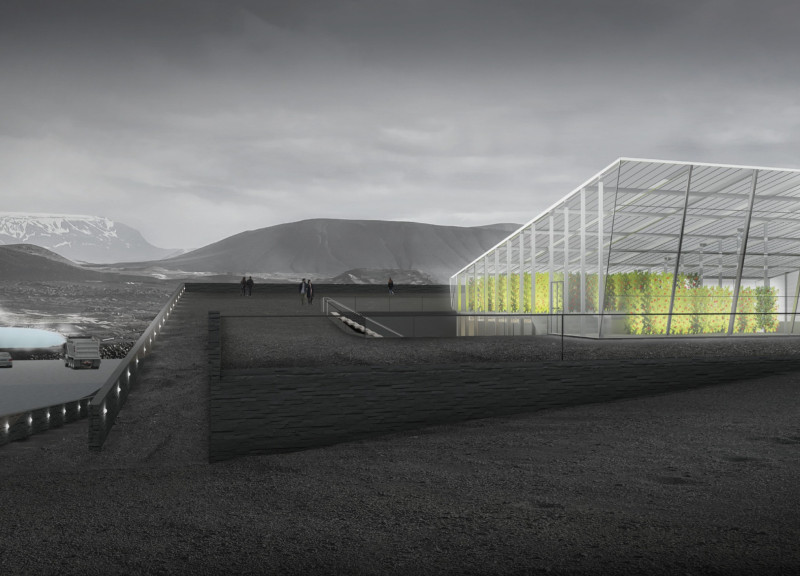5 key facts about this project
The design is set against the impressive backdrop of the Hverfjall volcano and Mývatn natural baths in Iceland. It serves multiple functions, including educational activities related to sustainable agriculture and dining experiences. The concept focuses on blending the built environment with the natural landscape. It encourages visitors to engage with the site through paths that follow the natural topography.
Design Concept
The design features a flow of natural and built elements that encourages a connection with the surrounding landscape. Ramps guide visitors along a gently inclined surface, enhancing their experience and spatial awareness of the area. The roof slopes down to follow the land, creating a visual connection between the architecture and the natural environment.
Central Courtyard
In the center lies a courtyard that connects crucial areas, including a two-storey greenhouse. This courtyard acts as a hub for movement and interaction. Guests can immerse themselves in learning about natural systems while exploring the productive landscape. The greenhouse positioned on the rooftop maximizes sun exposure, making it an inviting space for visitors while supporting plant growth.
Sustainable Systems
A noteworthy aspect of the building is its sustainable approach to water management. Stormwater is collected from the roof and used for irrigation in hydroponic systems. This method not only promotes sustainability but also demonstrates a responsible use of resources.
Materiality
The materials used in the construction significantly contribute to the design's context. Black basalt stone cladding mirrors the local geography, helping to ground the structure in its environment. Glass and aluminum elements add transparency, allowing natural light to flood in and creating a connection to the outside. In the greenhouse, an ethylene-tetrafluoroethylene (ETFE) membrane is used, allowing for abundant light while minimizing energy use.
Large windows throughout the building frame scenic views of the volcanic landscape. This feature enhances the feeling of being part of the natural surroundings, creating a calm atmosphere inside.






















































